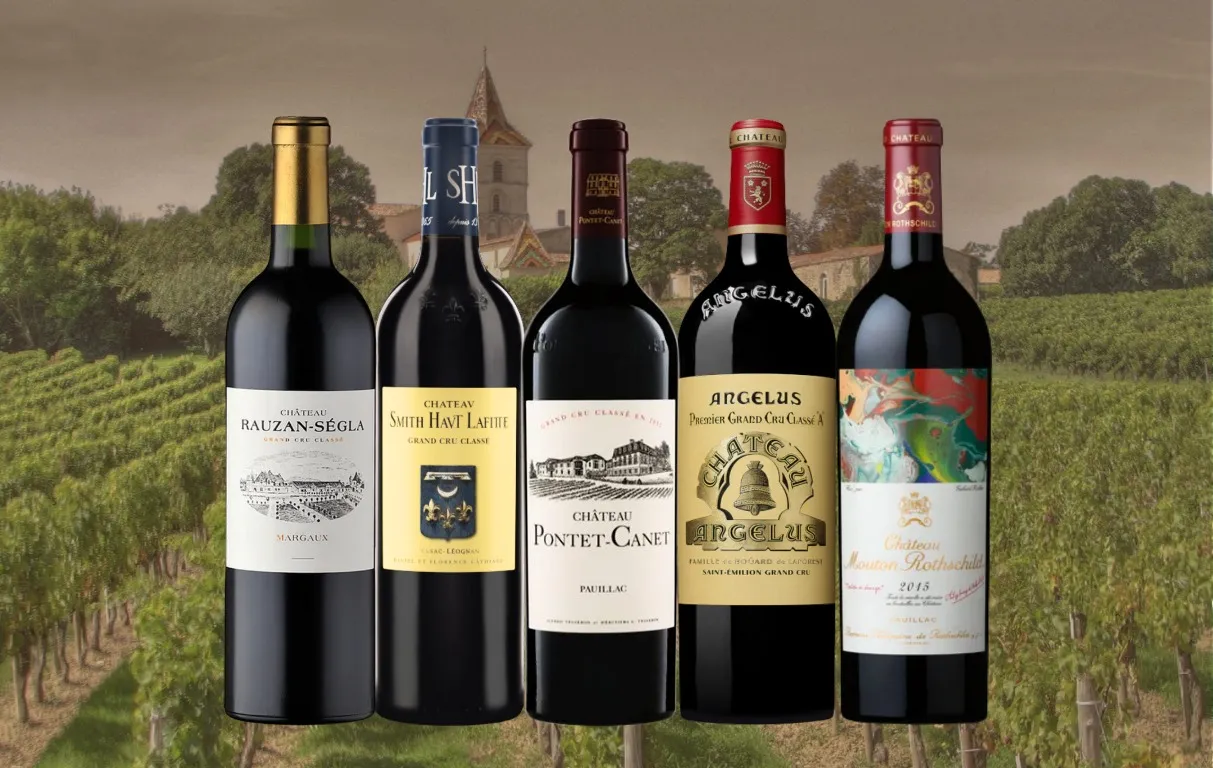
Bordeaux 2015: A Decade of Greatness
The Vintage That Defined Modern Collecting Ten years have passed since the Bordeaux 2015 vintage a milestone that reminds collectors why this year stands as one of the most defining moments in contemporary fine-wine history. More than a benchmark of quality, 2015 represents emotion, renewal, and the enduring artistry of Bordeaux’s greatest châteaux. A Return to Greatness After a series of uneven harvests between 2011 and 2014, 2015 marked Bordeaux’s long-awaited comeback. The region rediscovered its magic balance, depth, and elegance and the global fine-wine community took notice. For many collectors, 2015 symbolized the revival of confidence in Bordeaux as the reference point for age-worthy, investment-grade wines. Nature in Perfect Harmony The growing season in 2015 was near-ideal. A warm, dry summer ripened the grapes to perfection, followed by timely September rains that refreshed the vines and preserved freshness. On the Right Bank, Merlot achieved extraordinary ripeness and texture, producing monumental wines in Pomerol and Saint-Émilion. On the Left Bank, Margaux and Pessac-Léognan delivered brilliance and finesse wines of remarkable balance and charm. Masterpieces on Both Banks From Petrus and Cheval Blanc to Château Margaux and Haut-Brion, the great names of Bordeaux crafted wines that would come to define a generation. Margaux 2015, in particular, holds a special place in the hearts of collectors it was the last vintage overseen by the late Paul Pontallier, a man whose vision and precision shaped one of the most elegant eras in Bordeaux history. Owning a bottle from this year feels like owning a piece of that legacy. The Emotional Vintage Beyond quality,Bordeaux 2015 carries emotion. It marks the end of an era and the beginning of another a bridge between the past and the future of Bordeaux. Collectors often describe opening a 2015 not just as tasting wine, but as revisiting a moment in time when Bordeaux rediscovered its voice. Why Bordeaux 2015 Matters Today · A symbol of renewal for Bordeaux after difficult years. · A modern classic marrying richness and precision. · A decade milestone now entering its prime drinking window. · An emotional vintage, especially the final Margaux under Pontallier. · A collector’s cornerstone timeless, balanced, and universally admired. Top Wines from the Bordeaux 2015 Vintage 1. Best Value in 2015 Vintage Wine Appellation Score Château Rauzan-Ségla Margaux 97 Château Pontet-Canet Pauillac 98 Château Smith Haut Lafitte Pessac-Léognan 99 2. 100-Point Wines in 2015 Wine Appellation Score Château Canon Saint-Émilion 100 Château Angélus Saint-Émilion 100 Château Mouton Rothschild Pauillac 100 Château Haut-Brion Pessac-Léognan 100 Château Lafite Rothschild Pauillac 100 Château Cheval Blanc Saint-Émilion 100 Château Margaux Margaux 100 3. Blue-Chip Classics in 2015 Wine Appellation Score Château Lynch-Bages Pauillac 96 Château Pichon Longueville Baron Pauillac 99 Château Ducru-Beaucaillou Saint-Julien 98 Château Léoville Las Cases Saint-Julien 98 4. Top Large Formats in 2015 Wine Appellation Score Château Pichon Longueville Baron Pauillac 99 Vieux Château Certan Pomerol 97




